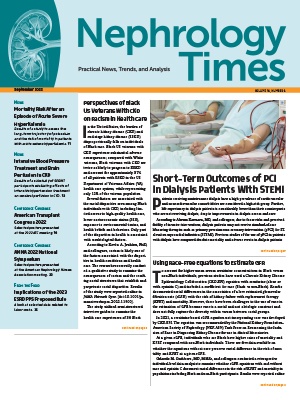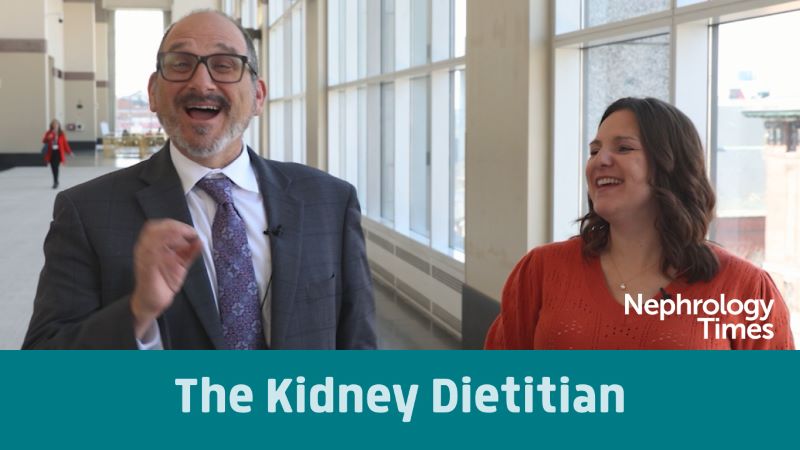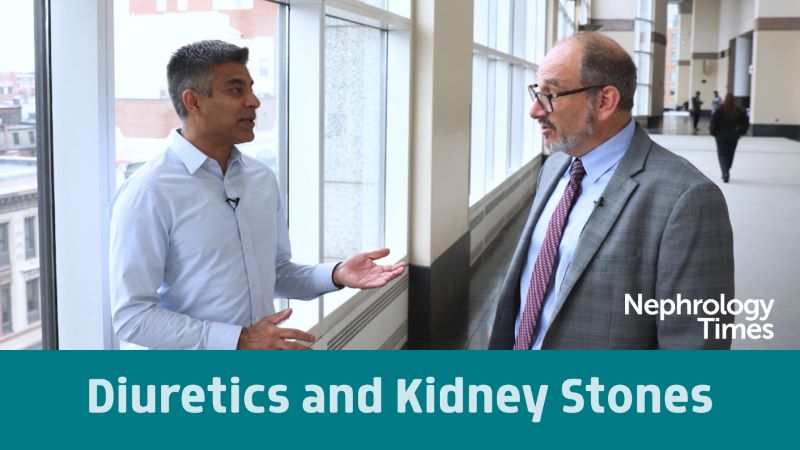
Patients receiving maintenance dialysis have a high prevalence of cardiovascular and noncardiovascular comorbidities are considered a high-risk group. Further, life expectancy in dialysis patients is considerably lower than their counterparts who are not receiving dialysis, despite improvements in dialysis access and care.
According to Akram Kawsara, MD, and colleagues, due to those risks and perceived futility of invasive interventions, dialysis patients may not receive standard-of-care life-saving therapies such as primary percutaneous coronary intervention (pPCI) for ST-elevation myocardial infarction (STEMI). Previous studies of the use of pPCI in patients with dialysis have compared absolute mortality and adverse events in dialysis patients versus nondialysis patients, rather than comparing the differential impact of pPCI in those populations (the treatment effect).
Dr. Kawsara et al conducted a retrospective cohort study to examine the relative benefit of pPCI (the pPCI treatment effect) in patients differing by dialysis status. The study utilized data from the National Inpatient Sample (2016-2018). Results were reported in the American Journal of Kidney Diseases [2022;79(6):832-840].
The primary study exposure was PCI. Confounders included dialysis status, demographics, insurance status, household income, comorbidities, and the elective nature of the admission. The primary outcome of interest was in-hospital mortality. Secondary outcomes included stroke, acute kidney injury (AKI), new requirement for dialysis, vascular complications, gastrointestinal bleeding, blood transfusion, mechanical ventilation, palliative care, home discharge, and transfer to a skilled nursing facility. The researchers also compared the length of stay and cost between dialysis and nondialysis patients with and without pPCI.
Propensity score matching was used to estimate the average treatment effect (ATE) of PCI in each group (dialysis or nondialysis). Separately within each group, a logistic regression model was used to predict the probability of receiving pPCI for each hospitalization, using several covariates (age, sex, race, insurance [Medicaid/Medicare], household income, hypertension, diabetes, heart failure, atrial fibrillation, peripheral vascular disease, prior stroke, prior sternotomy, conduction disorder, anemia, liver disease, obesity, malignancy, dementia, and elective admission status).
The study population included hospitalized adult (≥18 years of age) patients with a primary diagnosis of STEMI using International Classification of Diseases, Tenth Clinical Modification codes. Patients were excluded if they were coded to have STEMI as a secondary diagnosis. Patients transferred to another hospital were also excluded.
The final cohort included 413,500 weighted STEMI hospitalizations; of those, 1.07% (n=4220) involved patients receiving dialysis. In the nondialysis group, 326,735 PCI hospitalizations were matched to 325,955 non-PCI hospitalizations. In the dialysis group, 2420 PCI hospitalizations were matched to 2420 non-PCI hospitalization. Patients in the dialysis cohort were older (65.2 vs 63.4 years; P<.001), had a higher proportion of women (42.4% vs 30.6%; P<.001), had a lower proportion of White patients (41.1% vs 71.7%; P<.001), and had a higher prevalence of cardiac and noncardiac comorbidities.
Patients on dialysis were less likely to undergo standard-of-care procedures for STEMI, including coronary angiography (73.1% vs 85.4%; P<.001; adjusted odds ratio [OR], 0.63; 95% CI, 0.51-0.77; P<.001) and pPCI (57.5% vs 79.8%; P<.001; adjusted OR, 0.58; 95% CI, 0.50-0.68; P<.001). While infrequent, utilization of bare metal stent and bypass surgery was similar in both groups. Mechanical circulatory support use was higher in the dialysis group (12.8% vs 9.4%; P<.001).
In both the dialysis and nondialysis group, patients who underwent pPCI were younger and more likely to be treated at large or teaching hospitals. There was modest difference in most cardiovascular comorbidities between pPCI patients and non-pPCI patients; noncardiovascular comorbidities were more frequent among those who did not undergo pPCI.
In-hospital mortality was lower in patients who underwent pPCI compared with those who did not undergo pPCI. In the dialysis cohort, in-hospital mortality was 15.7% with pPCI versus 27.1% without pPCI (P<.001); in the cohort not receiving dialysis, in-hospital mortality was 5.0% with pPCI versus 17.4% without pPCI (P<.001). Major complications were more common in the non-pPCI group only in the nondialysis group.
There were no statistically significant differences between pPCI and no pPCI regarding cardiogenic shock, stroke, vascular complications, gastrointestinal bleeding, blood transfusion, or mechanical ventilation in patients receiving dialysis. Those who underwent pPCI were more often discharged home than to a rehabilitation skilled nursing facility in both groups.
There were no significant differences in the ATE of pPCI on the primary end point of in-hospital mortality between the group not receiving dialysis (ATE, –8.2%; 95% CI, –8.8% to –7.5%; P<.001) and the group receiving dialysis (ATE, –8.6%; 95% CI, –15.6% to –1.6%; P=.02).
In the group not receiving dialysis, patients who had pPCI had shorter median hospital stays (2 vs 3 days; P<.001) but higher median costs ($21,125 vs $13,901; P<.001). After risk adjustment, the length of stay was not significantly different, but the costs remained higher with the pPCI group. In the group receiving dialysis, patients who had pPCI had longer median stays (4 vs 3 days; P<.001) and higher median costs ($28,410 vs $13,950; P<.001). Following risk adjustment, length of stay remained longer and costs remained higher in the pPCI group.
There were some limitations to the study findings cited by the authors, including the use of administrative data that may be subject to coding errors, the lack of pharmacotherapy data, the lack of information on laboratory data or long-term outcomes, the possibility of residual confounders, and the wide confidence intervals in the dialysis group.
In conclusion, the researchers said, “Patients receiving maintenance dialysis are less likely to receive pPCI for STEMI than patients not receiving dialysis, despite a comparable effect of pPCI on in-hospital morbidity and mortality in both groups. Further studies are needed to optimize STEMI care in the growing dialysis population.”
Takeaway Points
- Results of a study examining the relative benefit of primary percutaneous coronary intervention (pPCI) in patients on dialysis compared with nondialysis patients presenting with ST-elevation myocardial infarction (STEMI).
- In-hospital mortality was lower in dialysis and non-dialysis patients who underwent pPCI compared with those who did not undergo pPCI.
- The study findings suggested that pPCI was associated with comparable reductions in short-term mortality in patients regardless of dialysis status.







 © 2025 Mashup Media, LLC, a Formedics Property. All Rights Reserved.
© 2025 Mashup Media, LLC, a Formedics Property. All Rights Reserved.